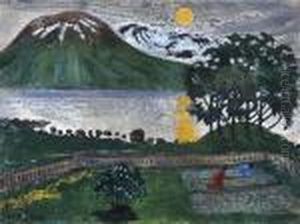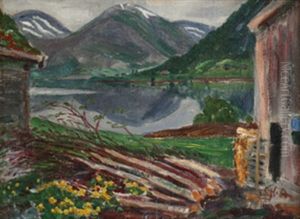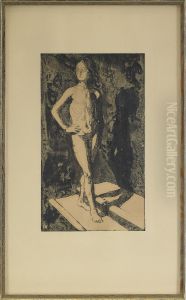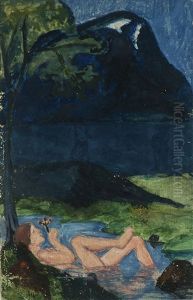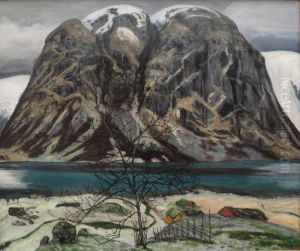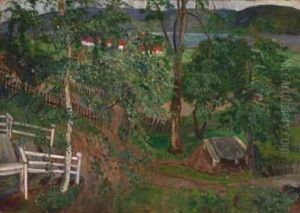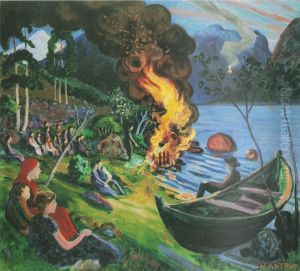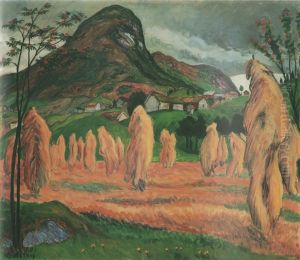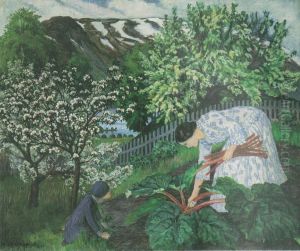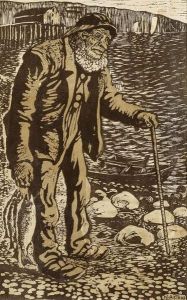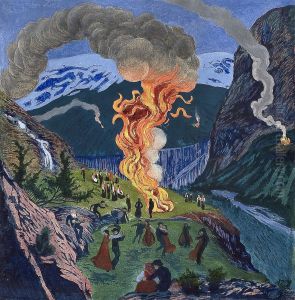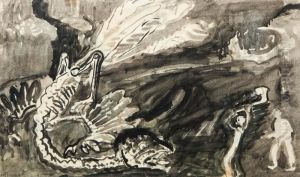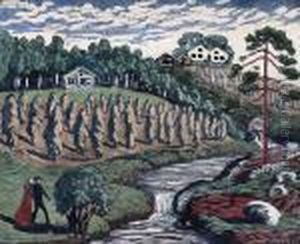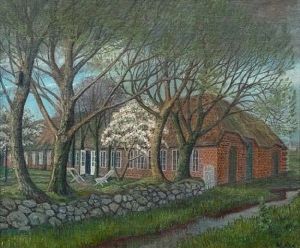Nikolai Astrup Paintings
Nikolai Astrup was a Norwegian painter and printmaker, known for his intense, colorful landscapes and depictions of Norwegian rural life. Born on August 30, 1880, in Bremanger in Sogn og Fjordane, Norway, he grew up in the village of Ålhus in Jølster where his father was a pastor. The natural surroundings of this area, with its rich traditions and folklore, had a profound impact on Astrup's artistic sensibility and became a recurring theme in his work.
Astrup displayed an early talent for art and began his formal education at the age of 19, studying under Harriet Backer at a private art school in Kristiania (now Oslo). He later trained under Christian Krohg, a leading artist of the naturalist movement in Norway. Despite his classical training, Astrup developed a distinct style that diverged from the prevailing naturalist and realist trends of the time. His work is characterized by a unique use of light and shadow, as well as a bold, vivid color palette.
Astrup's attachment to the West Norwegian landscape was not only aesthetic but also deeply personal and spiritual. His paintings often feature the lush, rolling hills, the traditional Norwegian farmsteads, and the festivities of Midsummer Eve, capturing the mystical atmosphere that pervades these scenes. He was particularly fascinated by the unique lighting of the Norwegian summer nights and the effect of the dense fog that often enveloped the landscape, elements that he masterfully incorporated into his paintings.
In addition to painting, Astrup was an innovative printmaker. He developed a unique technique that involved hand-coloring his woodcuts, resulting in prints with rich, painterly qualities. This approach set him apart from his contemporaries and added a tactile, expressive dimension to his work.
Astrup suffered from health problems throughout his life, which limited his ability to travel. He spent most of his career in Jølster, where he worked on his family farm in Sandalstrand (now known as Astruptunet), which he transformed into a place for both living and working. The farm and its surroundings provided endless inspiration for his art.
Despite his relatively short life and the limited recognition he received during his lifetime, Astrup's work has gained posthumous acclaim and is considered an important contribution to Norwegian national art. Nikolai Astrup died on January 21, 1928, in Jølster. Today, his work is celebrated for its vibrant depiction of Norwegian countryside and culture, and his paintings and prints are considered hallmarks of early 20th-century Norwegian art.
